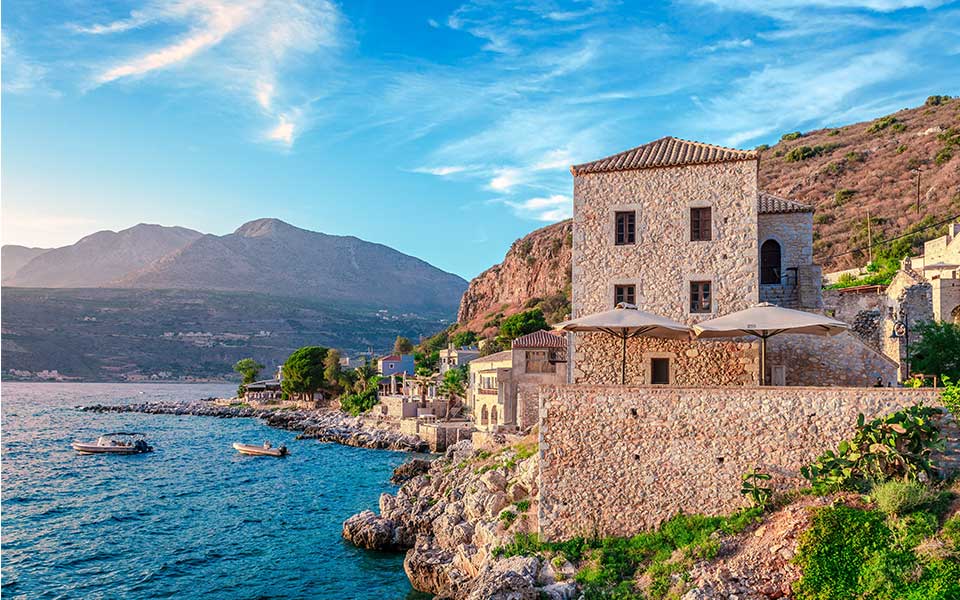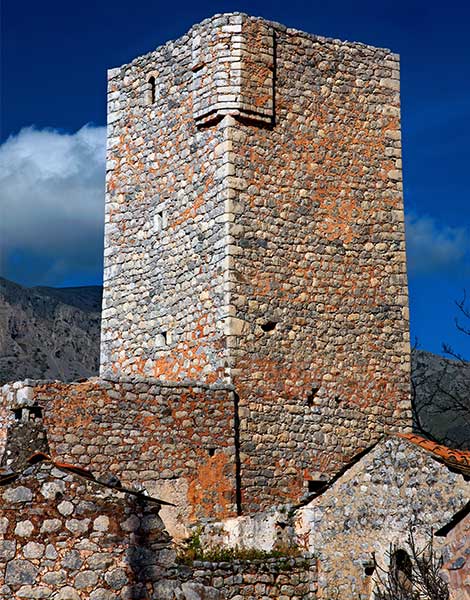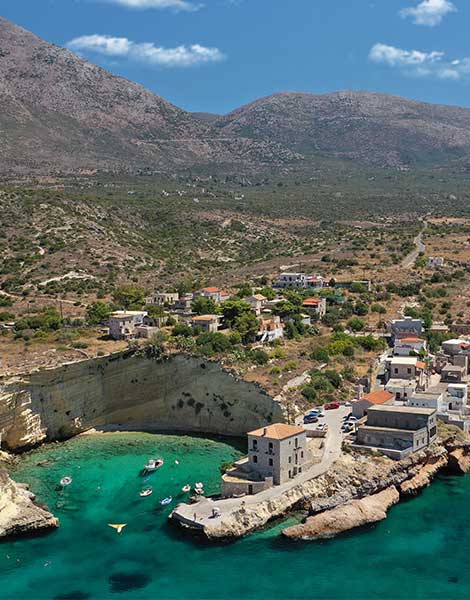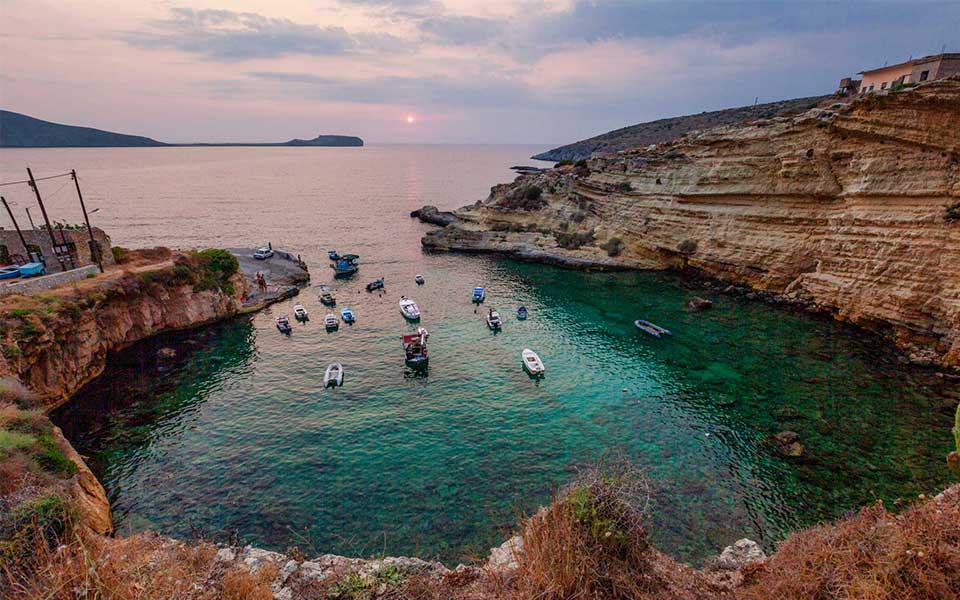The journey to Mesa Mani (or Laconian Mani, as it’s also known) begins in Limeni, the historic stronghold of the Mavromichalis family, whose founder arrived here from Eastern Thrace as a fugitive. According to one version of the story, a boy named Michalis, whose entire family had been killed by the Turks, and whom the locals called him “Mavro” (meaning “Black”) because of his unfortunate fate, took refuge here. The young boy worked hard, married and had four sons, thus beginning the history of the Mavromichalis clan, whom the locals referred to as “fairy-born” due to their striking beauty.
A descendant of this family was Petrobey Mavromichalis, who, along with other local chieftains, raised the banner of revolt against the Turks on March 17, 1821, in Areopoli. A few days later, the Maniots participated in the liberation of Kalamata; it’s estimated that around 50 members of the Mavromichalis family gave their lives in the struggle for Greek independence.

© Shutterstock
In Limeni, a tower that once belonged to the family still stands. Built in 1762 by Petrobey’s father, Pierros, it was described in local records as a “mess hall,” since Petrobey Mavromichalis offered the stone tower as a place for chieftains to gather and be fed. (The tower, which has been restored, now operates as a hotel.) Nearby stand the ruins of the Mavromichalis Palace; there was once an idea to restore the structure and open it as a museum.
Next to the small Church of Aghios Sostis at the southern edge of the village lies the tomb and statue of Petrobey Mavromichalis. Another statue of him can be seen in Athanaton Square in Areopoli, a town that has been declared a historic settlement due to its distinctive architecture and imposing tower houses.

© Shutterstock

© Shutterstock
In the village of Haria, six kilometers past Areopoli, stands the Arapakis Tower, which today functions as a hotel. The Arapakis family was one of the most powerful in Mani, with many of its members making history – from Ilias Arapakis, who fought in the 1821 revolution, to Yagos Arapakis, the first mayor of Kallithea, a district of Athens. However, the most fascinating biography belongs to Petros Arapakis, born in 1879 in Haria, who fell in love with the sea at an early age.
At the age of 16, he sailed 1,500 miles around the Mediterranean in a 16-foot sailboat boat, and a few years later, he dove into the then-unexplored caves of Diros. After qualifying as a merchant navy officer in London, he traveled to Australia, where he pursued his greatest dream: to sail around the world. He set off from there on the Pandora, a boat just 12 meters long, and reached New York via the passage around Cape Horn – one of the most treacherous routes for sailors. From the American coast, he continued his journey but never made it back to Europe. It is believed that his boat sank and that the Maniot sailor was lost at sea.

© Perikles Merakos
A few kilometers south of Ηaria lies the coastal settlement of Mezapo, the base of one of Mani’s most notorious pirates, Nikolou Sassaris. An 18th-century figure, Sassaris lost an eye in a skirmish in Andros; together with his crew, he became the terror of those sailing the Greek seas. It is said that in Mezapo Bay, in caves and among the rocks, he hid his plunder. He even had a vendetta with a member of the Mavromichalis family who wanted to build a tower in Mezapo, something Sassaris refused to allow.
Near the shore, you can still see the remains of the pirate’s own tower, which legend says was connected by underground passages to caves and the sea. Sassaris was killed in battle with a Turkish ship; following the traditions of the time, his wife mourned his passing with a Maniot dirge of her own composition, which has survived as The Corsair’s Lament.












